Microsoft Edge, a browser from Microsoft that is replacing Internet Explorer in Windows 11, offers a user-friendly and straightforward interface. It doesn’t hog the system resources as is the case with other browsers. However, like any piece of software, you may encounter an issue with the Edge browser as well.
You probably wouldn’t mind the browser lagging or freezing once a fortnight or but an unanticipated crash is a cause of concern. In some cases, it crashes abruptly while you are working. Also, many users have reported not being able to access it at all, since it crashes within a few seconds of launch.
Whatever be the case, there are some known fixes that have worked wonders for Edge users. But before we walk you through the fixes, it’s imperative that you understand the various issues that lead the browser to crash.
Why does Edge Keep Crashing?
There are various underlying issues that could crash the Edge browser and a fair understanding of it’s is necessary before you get to troubleshooting.
- Corrupt Browser Files
- Incompatible or Malfunctioning Browser Extension
- Third-party Antivirus
- Corrupt Browser Cache
- Too many apps running in the background
- Corrupt System Files
Listed below are some of the most effective fixes arranged in a sequence such that the common issues are dealt with first. Hence, execute the fixes in the sequence that they are mentioned for a quick and simple troubleshooting experience. Also, you may not be able to execute all of them if Edge crashes right away after launch, so skip those.
1. Clear Cache
Cache helps reduce the loading time for a website on subsequent visits by downloading certain elements, such as pictures, fonts, and codes, the first time. This cache may corrupt over time due to various reasons and could crash Edge.
To clear the cache on Edge, click on the ‘Settings and more’ option near the top-right of the browser.
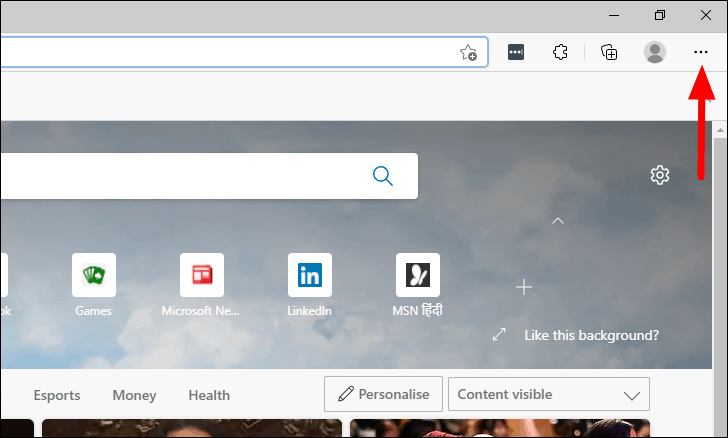
Next, select ‘History’ from the list of options to view the browser history. Alternatively, you can press CTRL + H to launch the browser history.
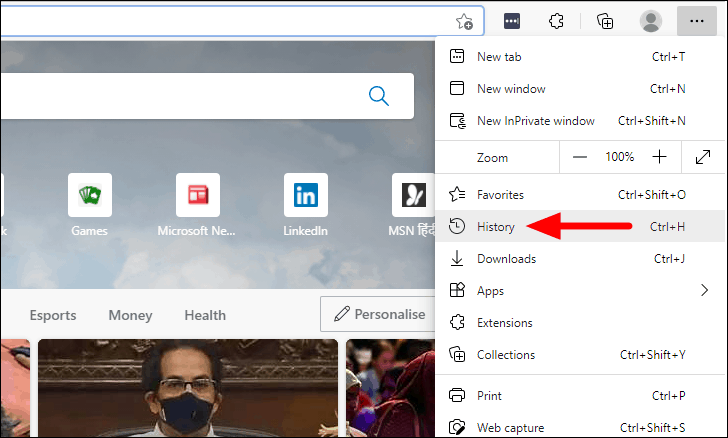
In the History flyout menu, click on the ellipsis at the top, and select ‘Clear browsing data’.

Finally, set the ‘Time Range’ to ‘All time’ by selecting it from the drop-down menu, select the ‘Cached images and files’ option, and then click on ‘Clear now’ at the bottom.
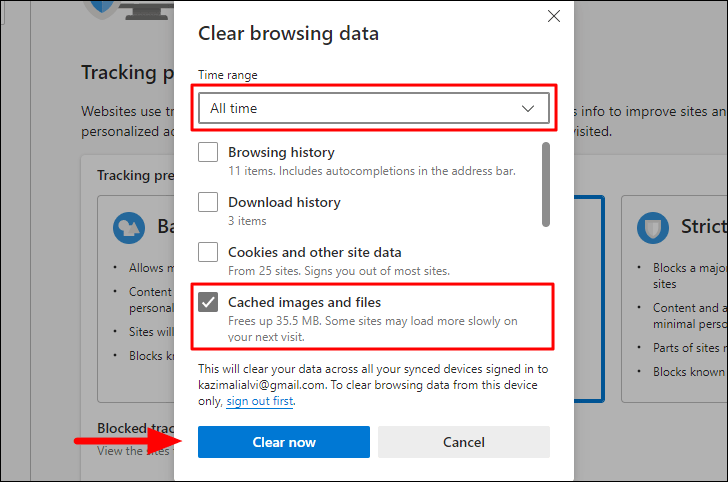
After clearing the cache, check if Edge works fine. In case it still crashes, move to the next fix.
2. Change Default Search Engine
If you set Google Chrome as the default search engine, it could cause the browser to crash. Therefore, try changing it and see if it works.
To change the default search engine, click on the ‘Settings and more’ option near the top-right corner of Edge.
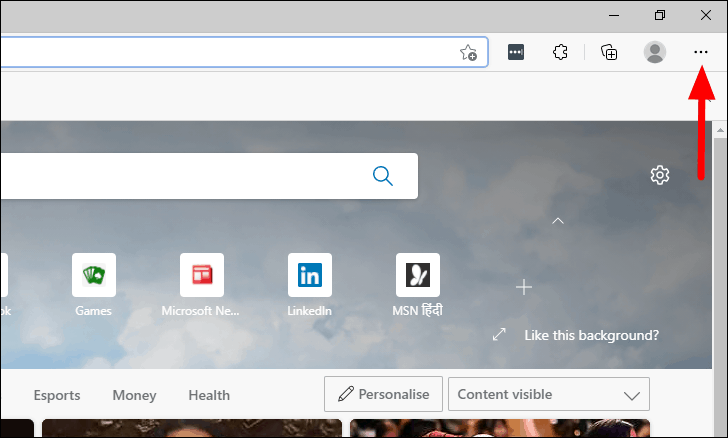
Next, select ‘Settings’ from the menu that appears.

You will now find a list of tabs on the left, select ‘Privacy, search, and services’,
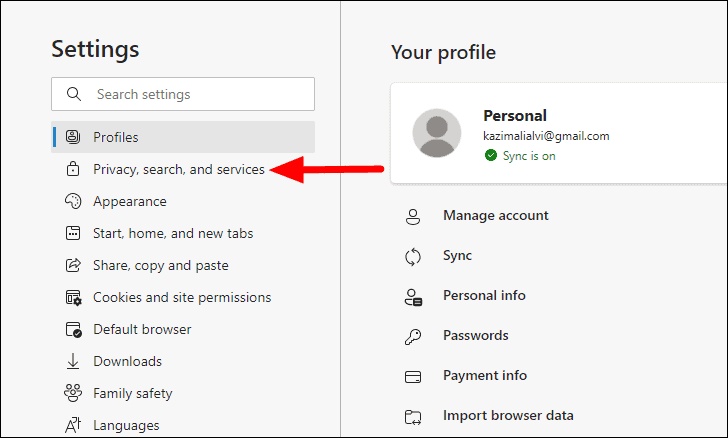
Next, scroll down to the bottom and select the ‘Address bar and search’ option.
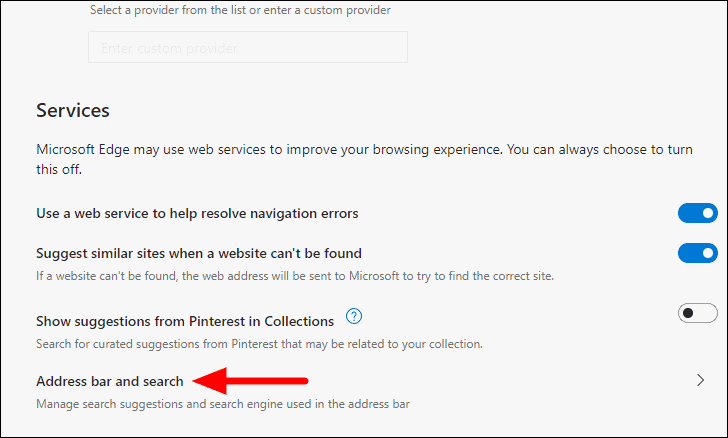
Finally, click on the drop-down menu next to ‘Search engine used in the address bar’ and select ‘Bing’ from the search results. You can select other options as well, but since Bing is recommended by Edge, it’s best to use it.
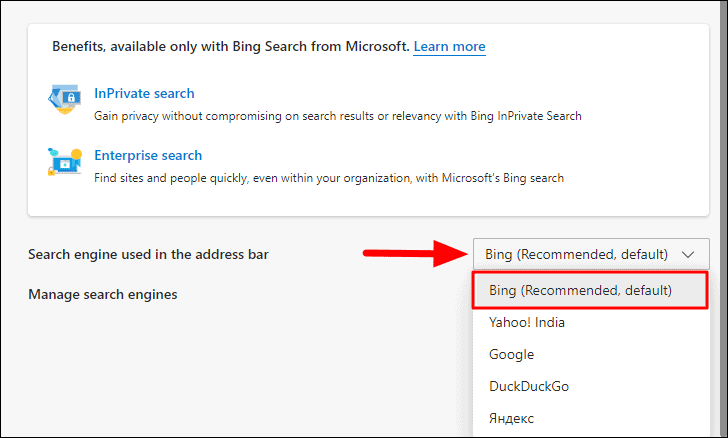
Restart Edge and check if the error is fixed.
3. Disable Search Suggestions
Disabling search suggestions has also worked as an effective fix for many users. If the others mentioned above have not worked, you can give it a shot.
To disable search suggestions, navigate to the ‘Privacy, search, and services’ services and select ‘Address bar and search’, as discussed earlier. Here, disable the toggle for ‘Show me search and site suggestion using my typed characters’.
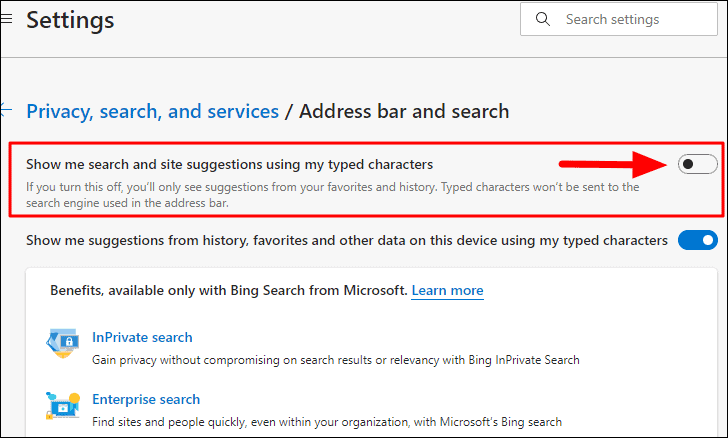
Restart Edge and check if it fixes the error.
4. Disable/Remove Extensions
Many a time, it could be an incompatible extension that could crash the Edge browser. Disabling such extensions has been known to fix the issue. Ad-blocker extensions are primarily known to cause the error, however, there could be other extensions as well.
First, disable the extensions and verify if it fixes the issue. In case the issue of Edge crashing persists, remove the extensions altogether. You can remove them all and then add them one at a time while verifying if it leads to instability.
To disable/remove an extension from Edge, click on the ‘Settings and more’ icon near the top-right corner and select ‘Extensions’ from the menu.

To disable an extension, turn off the toggle next to it.
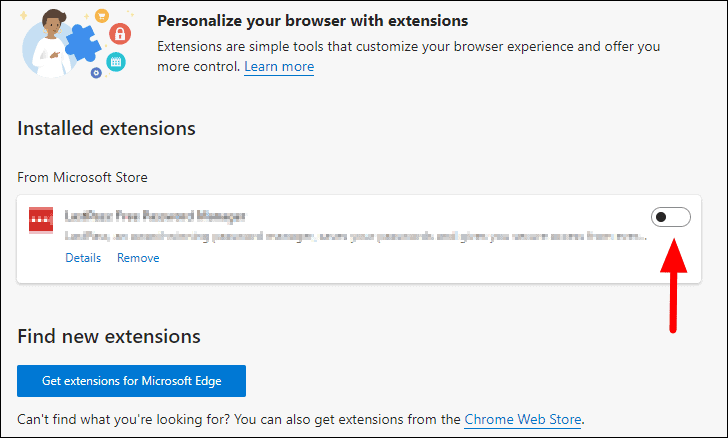
If disabling the extensions doesn’t work, you can try removing them altogether.
To remove an extension, click on the ‘Remove’ option under it.
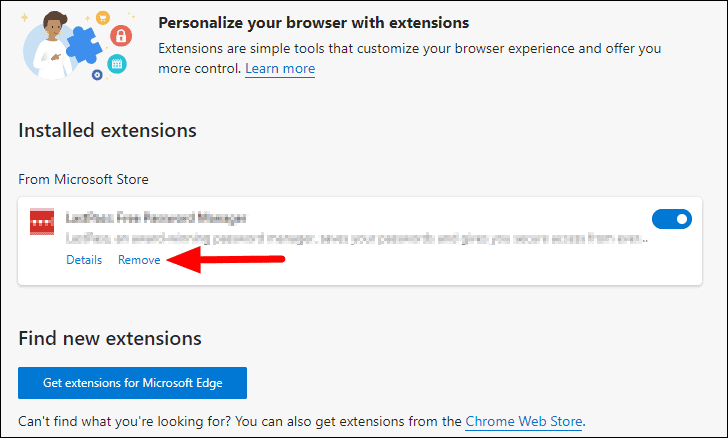
Next, click on ‘Remove’ in the confirmation box that appears at the top.
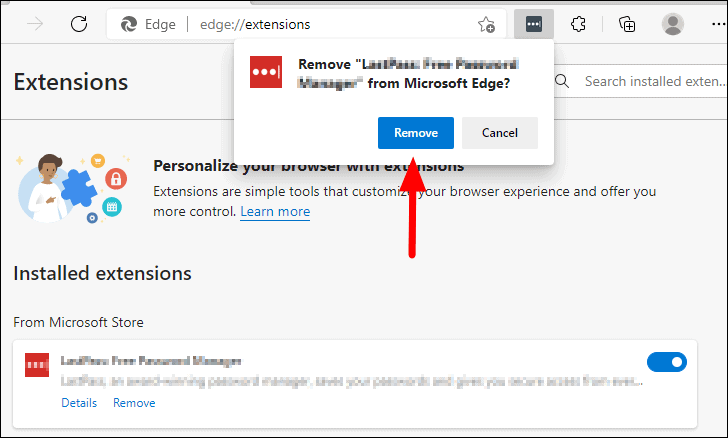
Check if disabling or removing the extensions fixes the issue.
5. Update Edge
If you haven’t updated Edge in a while, it’s time you check if there are any available updates. You could also be encountering the error due to a bug in the current version which could likely be fixed with an update.
To update Edge, click on the ‘Settings and more’ option near the top-right corner.

Next, hover the cursor over ‘Help and feedback’ in the list of options that appear and select ‘About Microsoft Edge’.
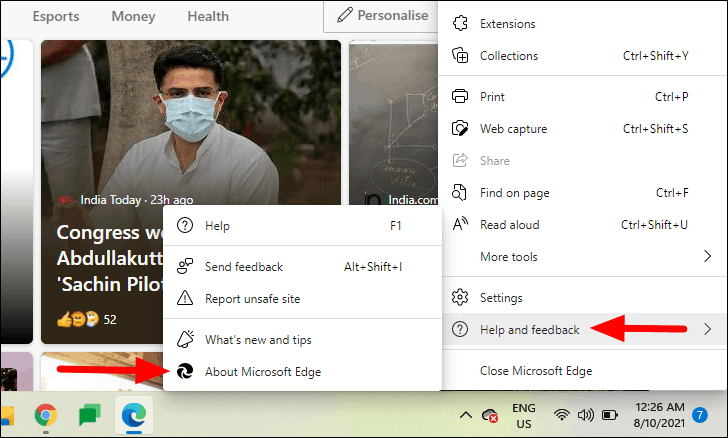
Edge will now automatically look for available updates, and if one is available, it will be downloaded and installed. In case you are on the latest version, it will read ‘Microsoft Edge is up to date’, in which case, you can move to the next fix.
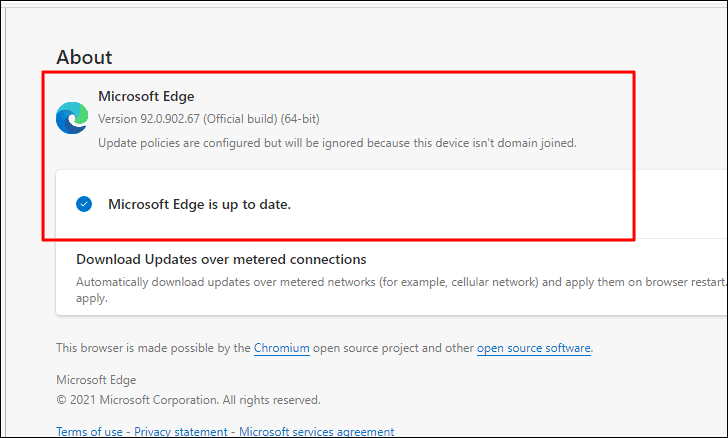
6. Repair Edge
Repairing Edge helps fix a lot of errors with the browser including the ones that lead to its crash. You can easily repair the browser via the app settings on your system without having to install any third-party software or launching Edge. This fix would be of great help if you are unable to access the browser and execute the other fixes.
Note: Before you proceed, make sure your system is connected to a stable internet connection.
To repair Edge, press WINDOWS + S to launch the ‘Search’ menu, enter ‘Settings’ in the text field at the top, and then click on the relevant search result to launch the app. Alternatively, you can press WINDOWS + I to launch the Settings app.
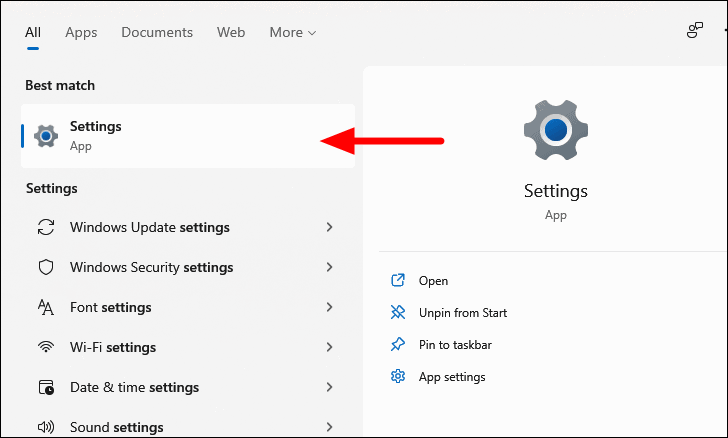
In Settings, select ‘Apps’ from the tabs listed on the left.
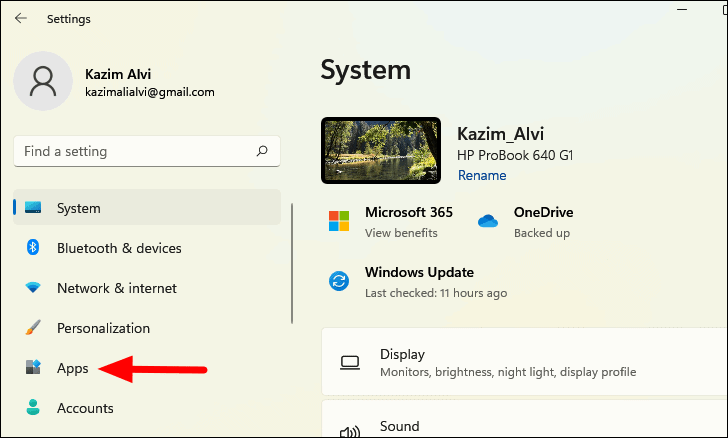
Next, click on ‘Apps & features’ from the list of options on the right.

Now, locate ‘Microsoft Edge’ from listed apps, click on the ellipsis next to it, and select ‘Modify’.
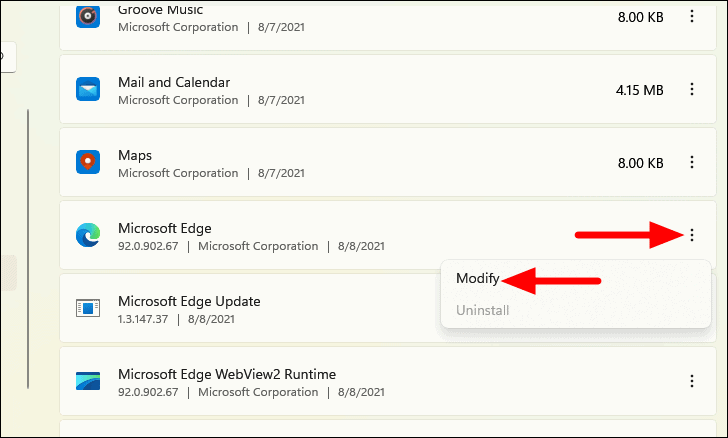
In the ‘Repair Microsoft Edge’ window, click on ‘Repair’ and then follow the on-screen instructions to complete the repair process.

This process will reinstall the browser, although the browser data and configured settings won’t be affected.
7. Update Windows
Running an older version of Windows could also lead to instability. Also, a bug in the present version could be causing the error. If that’s the case, you should check if an update is available, since the bug is most likely to be fixed in subsequent updates.
To update Windows 11, launch the ‘Settings’ app as discussed earlier, and select the ‘Windows Update’ from the tabs listed on the left.
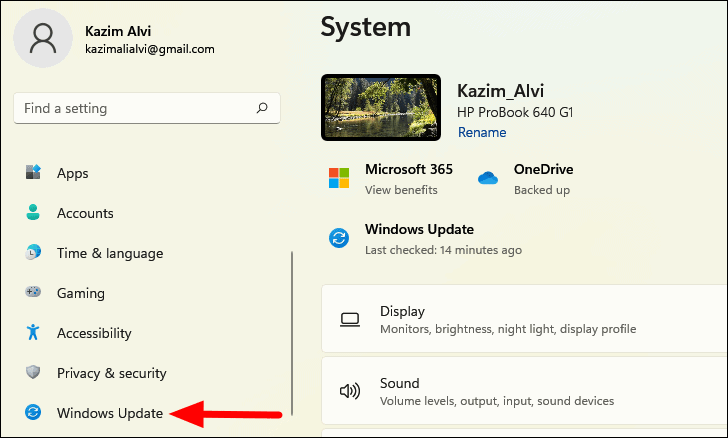
Next, click on the ‘Check for updates’ option on the right to scan for any available updates.
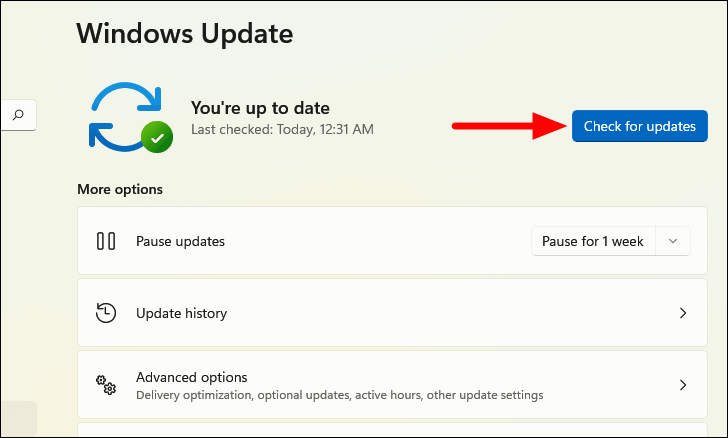
If any update for Windows 11 is available, it will be download and installed. Restart the computer after the update is installed and check if Edge now works fine.
8. Run SFC Scan
Corrupt system files could also be a possible cause for Edge to crash. SFC (System File Checker) scan identifies corrupt system files and replaces them with a cached copy. You can run the scan with a simple command in an elevated Command Prompt.
To run an SFC scan, search for ‘Windows Terminal’ in the ‘Search’ menu, and right-click on the relevant search result, and select ‘Run as administrator’ from the context menu.
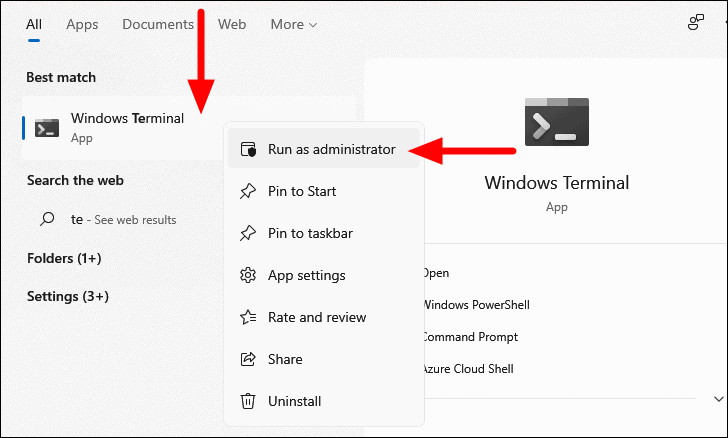
If you haven’t set ‘Command Prompt’ as the default profile, the ‘PowerShell’ tab will open by default. To open the ‘Command Prompt’ tab, click on the downward-facing arrow at the top and select ‘Command Prompt’ from the list of options. Alternatively, you can press CTRL + SHIFT + 2 to launch Command Prompt.
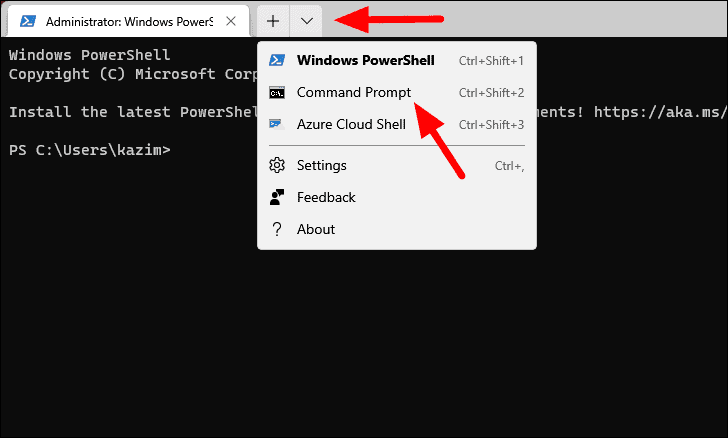
Next, enter the following command and press ENTER to execute it. This command runs the SFC scan.
sfc /scannow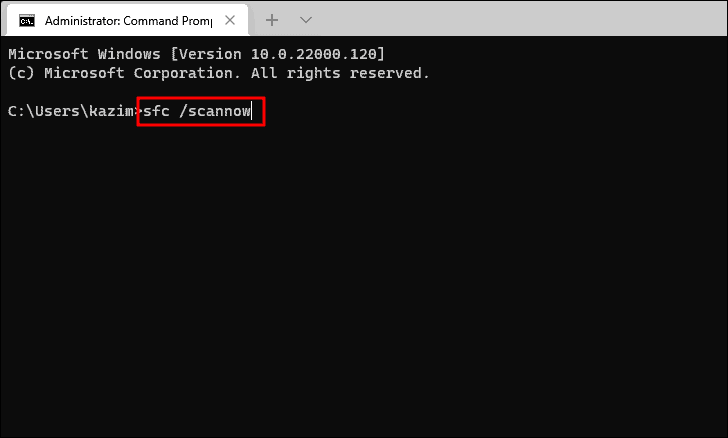
The scan will begin in a few moments and will take a few minutes to complete. You can work on the system while the scan runs in the background.
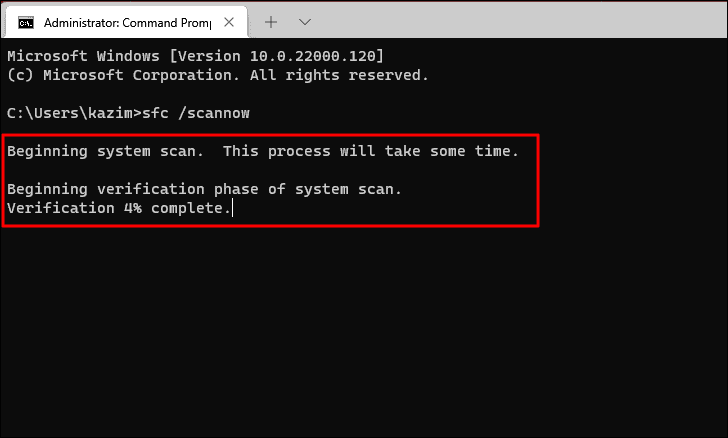
After the scan is run, you would be informed if any corrupt files were found. Launch Edge and check if it still crashes or runs efficiently.
9. Uninstall Third-party Antivirus
If none of the above fixes have worked, it’s likely that a third-party antivirus installed on the system is the culprit. If you have installed one, uninstall it and verify if it fixes the error.
To uninstall a third-party antivirus (or any app), press WINDOWS + R to launch the Run command, enter ‘appwiz.cpl’ in the text field, and either click on ‘OK’ at the bottom or press ENTER to launch the ‘Program and Features’ window.
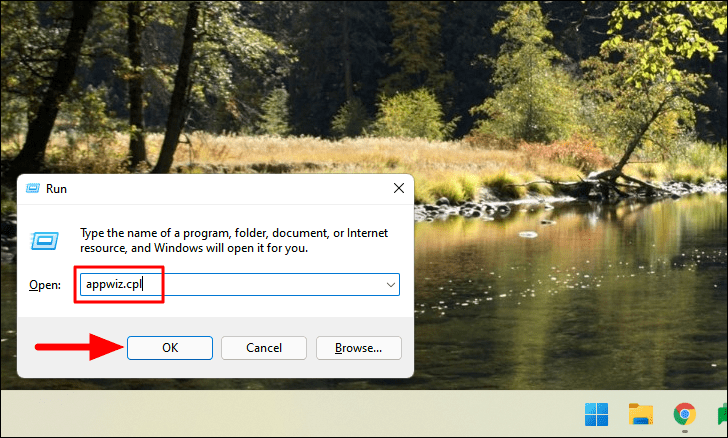
Now, select the third-party antivirus from the list of apps, and click on ‘Uninstall’ at the top. Select the appropriate response in case a confirmation box pops up.
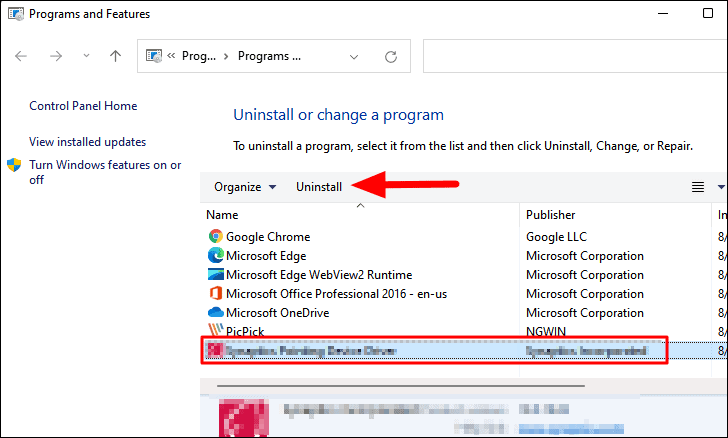
After uninstalling the app, Edge should start working fine and not crash.
10. Switch Browser
If none of the above fixes have worked, you always have the option to switch to either Google Chrome or Mozilla Firefox, two of the best browsers presently. After you switch, keep looking for Edge and Windows updates, install them, and check if the error is fixed or you can permanently switch to the browsers mentioned above.
After executing the above fixes, Microsoft Edge wouldn’t crash anymore, and you can use it without the fear of losing unsaved data.

